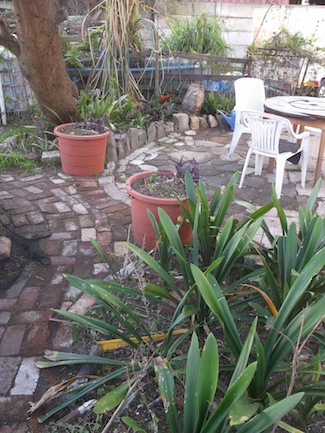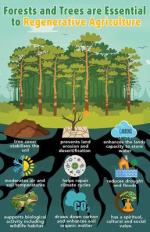green home
Having a green home is something you can do towards making a greener planet, beyond activism of course. A home is also like an eco system, and in the case of my home, some areas are more than comfortably close to being that. The use of water in the domestic situation is important, as is the careful selection of household products that are safe to use for grey water recycling. To learn more I attended a workshop on how to make your own biodegradable cleaning products and natural cosmetics. How you keep yourself clean is important, but so is reducing packaging and recycling and the recycling page is aimed at understanding and acting on the larger picture, as well as practice on a domestic scale for reduction of wheelie bin waste: with the British website the Rubbish Diet, and this website's Nobin Prize, a global competition, and its winners. In addition there are tips on how to recycle plastic and appliances, which can be difficult. Plastic is a problem on the domestic and the global level. Another substance I didn't know how to recycle was excess fat, till I thought of making candles. Organic recycling can either consist in anaerobic or aerobic composting, or vermiculture. Here is a link to a vermiculture website. Worming is easy if you know the basics and can halve your bin content without any strenuous work. Paper I include under organics. It can also be recycled in many other ways such re-using, true recycling (making other papers from old paper) down cycling, making mash based products like furniture etc. so you can also return it to large recycling agencies, or the door to door people. Glass I use again and again, its so useful. When I have too much it goes to the glass container. I use old orange pockets to keep metal such as old tins, small appliances and metal parts and I give these to the recycling agents who go door to door or bin to bin on bin day in South Africa because our welfare system cannot support a human being properly, and they have become micro entrepreneurs. Though the work does not have status it should have, its very necessary work.

a green home's challenge: DOMESTIC WASTE
Bottles, aluminium foil and some plastics, and paper, are commercially recycled in many countries, and you can take them to the waste processing centres. OASIS in Landsdowne Road Cape Town is one of the best locally. It is a major employer of alternatively abled people, so thumbs up all round when you take your stuff there.
OASIS RECYCLING DEPOT IN LANDSDOWNE
A lot of metal waste, and the copper in old appliances is recycled by agents who move door to door on waste collection days. They are not given the status they deserve as workers at the coal face of the recycling industry. Every week, they turn garbage from people's homes into money. Thumbs up all round to the recycling agents on the street.
Organic waste, and this can include substantial amounts of paper, can be put through a worm farm, and every green home should have one. Since I’ve had worm farms the last ten years my garbage has decreased so much I only put the bin out once a month (scratch that, its now down to every three months). There is also no stink in the bin, as the rottable organics go into the worm bin. Paper can be dumped in a large vat of water and soaked till it disintegrates, or you can rip it to pieces as you go. I have a collecting bucket for organic waste in the kitchen, with a tight lid to prevent flies and maggots, and I always tear some paper into strips, which it does easily, and place a nest of this at the bottom of the bucket after emptying it out in the worm bin. The paper very soon absorbs any anaerobic odours and keeps the bucket smelling mildly of ripe vegetables. Apparently the excessive amounts of Carbon in paper absorb the Nitrogen from rotting organics, as occurs in a well balanced compost heap, which should not smell if it has the correct N to C ratio.
Plastic containers of all kinds can be reused, in a green home, as can bags. I never throw mine out. But they do tend to pile up because sometimes I’m just tired of telling people I don’t want bags especially in Goodwood, for some reason. It is always and awkward moment. I reuse my containers to freeze food, make lunch packages, and use bags and containers to plant plants in my home nursery. The thin weighing bags and the thin bread and apple bags we take out mainly as poop bags on our walks. I’ve seen fantastic items made with crocheted plastic from plastic bags, and I tried it out, but its very time consuming cutting the stuff up, and it stretches and breaks. Each item of packaging that comes in serves many purposes before it finds its way into the trash. But its not enough. I would like ideas on how to recycle and reduce my domestic waste even more, other than organics, which is sorted.
energy in the green home
We try to buy less electricity, turning off the geyser and using the gym to shower, and a large kettle to boil water for washing dishes. This constitutes a saving of nine tenths of our electricity, and the gym is much less than that. Hot water is the largest energy user in most homes in South Africa. In cold countries and very hot countries warming or cooling airspace may take that role. I never have a heater on. I cuddle up in bed with a hot water bottle in winter, or I wear multiple layers of clothing when writing at my desk. We don’t air condition our home. Its an old house, and planned opening and closing of blinds and windows manages the heat quite well, most of the time. If its too hot to work, we dump our fried bodies and brains in the Koi pond with the recycled water it contains.
saving water in the green home
Our house, like many in the area, has red water, due to rusty old pipes or the clay in the reservoir. The heavy metals like Copper can cause headaches and eventually kidney damage. I researched on filters. They are very expensive and not as effective as running the water for a few minutes in terms of the percentage of metals removed from the water. In order not to waste a lot of water letting it run all the time, my partner will top up the pond, so that water has been running for five minutes, and then fill a huge plastic vat in the kitchen, and we use that water for drinking and cooking and for the animals, for about a week.
I do all washing in plastic basins and then use the water to flush the toilet without needing an expensive gray water system.
The Koi pond is like what they call a natural swimming pool, cleaned by bio filtration, and plants, and not by chlorine or salt. It never goes green and swimming with fish is delightful. Well… not really swimming, the pool is only a portapool….immersing would be more apt. My partner once worked on a Koi farm and got the fish in lieu of payment for his labour. Quite a ripoff, considering the risk involved, but he has some very good fish.
To save water we don’t water our garden with a hose or irrigation. We have a xeriscape, a green home garden that needs very little watering, choosing plants for their resistance to drought, and also, hardening our plants, which makes a big difference. To choose drought resistant varieties, go indigenous, if you can afford it. Otherwise look around your area for plants that look good on hot days and never get watered, because they grow on road islands etc. In our area hibiscus, Oleander, succulents, guava trees, the thorn tree Acacia karoo, Salvia (butterfly bush) and Rhus, Carissa bispinosa, Clivias, Agapanthus and wild Jasmine have done well, but Oleanders and Guavas are invasive, and should never be planted near wilderness, rivers or mountain. I have grown Oleander, Carissa, Hibiscus and Salvias from cuttings and rooted branches. To harden plants, when first planted out I water daily, then reduce the amount, then start watering every second, and then every fourth day. When I get to once a week I water them well, but seldom. After a month or so, they are usually pretty much able to survive. Another good idea is to plant at the beginning of the rainy season only. No toting then. By the time summer comes the plants are established and don’t need watering anymore. If you choose your plants well they seldom die. About four or five watering cans a day of fish water sees to the strawberries, my nursery, the petunias in the twin pots out front, and anything else which seems to be wilting.
I’ll soon be running a home farm, culturing worms, and then I’ll have to tote quite a bit. If its really heavy I’ll only need to go to gym every second day to work my legs.
---------
---------
links to a lot more useful low budget green ideas
----------
------------
eco friendly products in a green home
------------
------------
Restore Nature Newsletter
I've been writing for four years now and I would love to hear from you
Please let me know if you have any questions, comments or stories to share on gardening, permaculture, regenerative agriculture, food forests, natural gardening, do nothing gardening, observations about pests and diseases, foraging, dealing with and using weeds constructively, composting and going offgrid.
SEARCH
Order the Kindle E-book for the SPECIAL PRICE of only
Prices valid till 30.09.2023
Recent Articles
-
Rose
Dec 17, 23 04:08 AM
I am doing research on growing wildlife foraging plants to use in enhancement plantings with wildlife in mind. My thoughts after seeing bears too skinny -
Seeds for a bred Sweeter less acidic Kei apple
Nov 20, 23 03:24 AM
Greetings Greenidiom, I'm a small farmer in kenya. I'm looking to plant a Green fence around a 6 acre plot of land and, I'd wish to make it of kei apples -
Mrs Laura Robinson
Oct 08, 23 02:17 AM
How do I get a copy of the soil aggregation poster??
"How to start a profitable worm business on a shoestring budget
Order a printed copy from "Amazon" at the SPECIAL PRICE of only
or a digital version from the "Kindle" store at the SPECIAL PRICE of only
Prices valid till 30.09.2023






